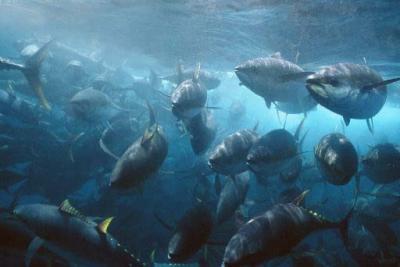Marine zoning in the Pacific Ocean, in combination with other measures, could significantly improve numbers of heavily overfished bigeye tuna and improve local economies, a fish modelling study has found.
Scientists working at the University of Hawaii at Manoa (Honolulu, HI), the Secretariat of the Pacific Community (SPC, Noumea, New Caledonia) and Collecte Localisation Satellites (CLS, Toulouse, France), have found that a network of marine zones in the Pacific Ocean could be a more effective conservation measure than simply closing relatively small areas to some types of fishing.These marine zones, where different fishing activities are allowed in different areas, may have significant and widespread benefits for bigeye tuna numbers.Dr John Sibert of the University of Hawaii Joint Institute of Marine and Atmospheric Research is one of four scientists leading the study.After testing the effectiveness of a range of conservation measures with an ecosystem and fish population model, Dr Sibert says the team found that the most effective measures were to:
- restrict longline fishing in tuna-spawning areas
- manage the use of fish-aggregating devices (e.g. moored or drifting buoys which attract fish) in purse-seine areas.
"We found that simply closing areas off to fishing doesn't work, because the boats just move their operations to neighbouring zones and fish even harder. It's going to need a combination of approaches," he says.
"The model will help people evaluate alternative policies to manage tropical tuna fisheries. Our predictions can help countries estimate how effective conservation measures might be, relative to any economic effects, and tailor measures to suit their goals. The advantage of this approach is that effects can be estimated locally, as well as for the stock as a whole."
Half the current bigeye tuna catch is by longline, which targets high-value tuna sold as fresh fish. These fish command a market premium and sell for over $10 per kilogram.
The other half is caught in purse-seine nets as incidental bycatch when aiming to catch skipjack tuna. These juvenile bigeye tuna are sold to the canning industry for $1.70 per kilogram.
Dr Sibert says the study calls for a complete economic valuation of the Western Central Pacific Ocean (WCPO) tuna fishery.
He says the most effective conservation measures are those "which protect fish throughout their lifetime."
Rebuilding the bigeye-tuna stock will take at least 15 years, and will be affected by any climate changes the ecosystems experience.

A mixed school of tuna are visible here in a purse seine net.
(Photo Credit: Bill Boyce, boyceimage.com)
Source: University of Hawaii ‑ SOEST